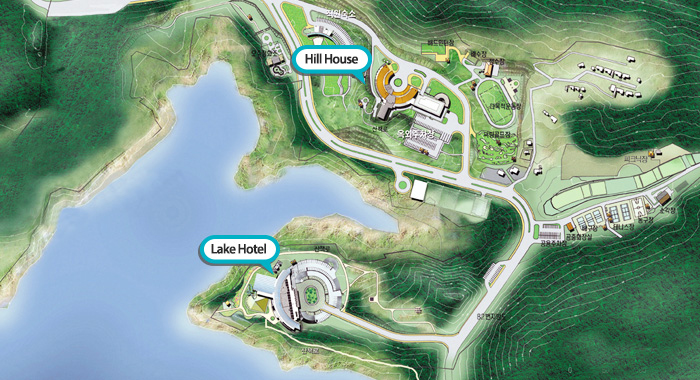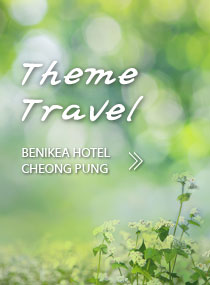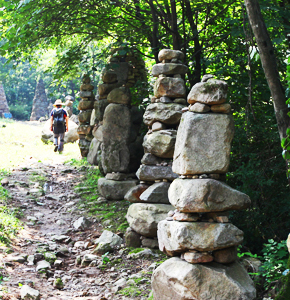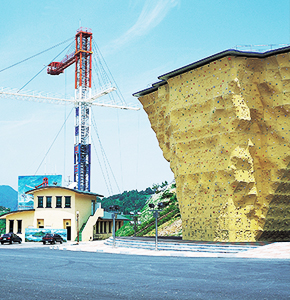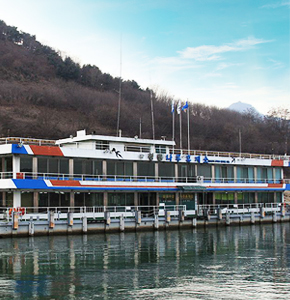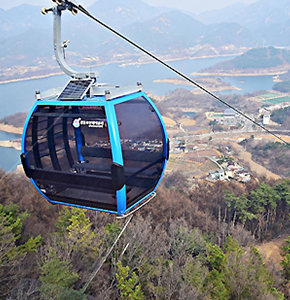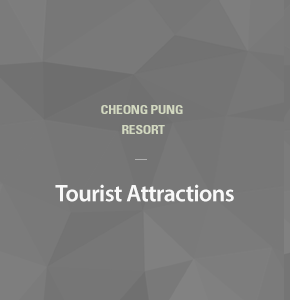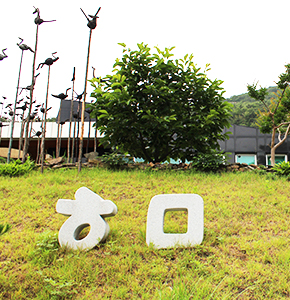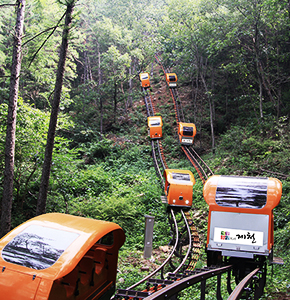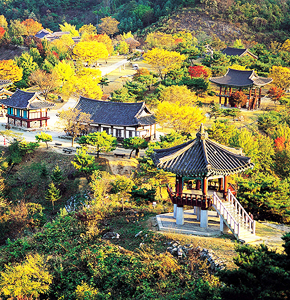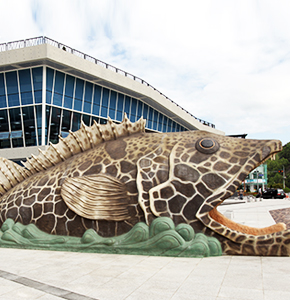Walkway/Trail
- We will make your dreams of a relaxed life come true.
-
We invite you to feel the beauty of our themed tourism programs.
You can enjoy a relaxed life in the recreation area of nature in harmony with Cheongpung lakeside and the ten scenic views of Jecheon.
Wild Birds Observable in Cheongpung
Crow

The word “crow” refers to a wide range of birds in the family of Corvidae or just one of Corvus corone. There are 40 or so member of this genus. It has black and shiny feathers and is known to be one of the smartest birds. As a sedentary bird, it appears commonly in Korean living on a mixed diet and nests in evergreen trees deep in the mountain. It lays about 5 eggs which are blue with brown dots.
- Periphery of Cheongpung Resort and Geumsusan Mountain, Top of Jakeundongsan
Pheasant
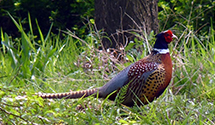
Residing in Korea, pheasants are divided into a Korean pheasant, a North pheasant from the Manchuria region, and Geomundo pheasant from China. The Korean pheasants live all over the Korean peninsula (except Hamgyong-do), and the North pheasants live in the north region of Hamgyong-do and Manchuria region. It has colorful black dots and a deep tail. The male pheasant has a bluish neck with a white line around it and sings louder than the female pheasant which is smaller in size and is brown with black dots.
- Periphery of Cheongpung Resort and Geumsusan Mountain, Top of Jakeundongsan
Spotbill Duck
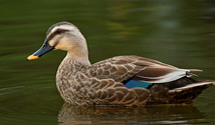
It is about 16cm long with a blackish brown back and waist, light brown colored head, neck and underneath the body, and a dark brown brow line. It eats both vegetable and animal feed. It is spread over East Asian countries mainly Korea, Japan, and China and stays in Southeast Asia during the coldest season. It is visible in Korea during the winter. Both the male and female seem similar but the male has a slightly darker black brown upper and under tail covert than that of the female, and its cheeks appears to be brighter than the female.
- Periphery of Cheongpung Resort and Geumsusan Mountain, Top of Jakeundongsan
Brown-Eared Bulbul
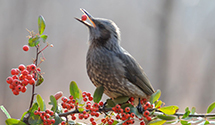
The back of the neck for the both male and female are light gray with a blue wing and each feather has a sharp end. Its back, waist and upper tail covert are the dark cement color of gray and the edge of each feather is slightly light. The front of the eyes is dark brown and the area from the ear and front of the neck is a brown strip. The area under the chin and neck is light gray and the upper breast is dark gray with a lighter edge on each feather.
- Easily observable around the Cheongpung Resort walkway
Butcherbird
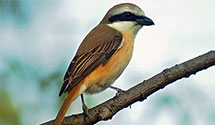
The top of the head and the upper neck of the male are brown and the back is gray. The wing is black with white dots and the tail is dark brown and long. The abdomen is light yellow and the flank is yellow. There is a thick black stripe above the eyes and the eyebrow strip is white. The back of the female is dark brown, the eyebrow strip is light yellow, and the abdomen is dark with dense horizontal patterns. It is dispersed around the east of Asia, Sakhalin, the north and east region of China, Korea, Japan, etc.
- Easily observable around the Cheongpung Resort walkway
Kestrel

The male has a gray head and tail, and the end of the tail and wing are black. The back is a brown base with black dots, and the abdomen is a yellow brown base with a series of black dots. The upper half of the female body including a tail is brown and only the end of a wing and tail are black. It is currently settled in Korea successfully residing in many metropolitan cities, and protected by being designated as natural monument No. 323-8 in November 4, 1982.
- Geumsusan Mountain,Jakeundongsan area
Redstart
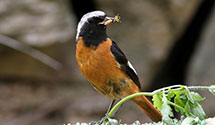
The male’s head and the back of neck are gray and the rest of the area and the upper area including the back are black. The waist and outer tail feather are yellow brown and the middle of the tail feather is brown. The abdomen is light gray and orange and it is noticeable as there is a white area on the wing. It resides around the outskirts of a city or near the gardens or houses in the farm village. It is a common residential bird dispersed in south and southeast Asia.
- Easily observable around the Cheongpung Resort walkway
Parrotbill (Korean crow-tit)
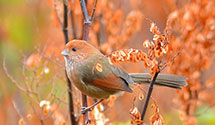
The forehead, the top of the head, and the back of the neck for both the male and female are yellowish brown. The back and waist is gray brown while the upper tail covert is light yellow brown. The cheek and the ear feather are light rose colored brown and the area under the chin and the neck, and the breast is the same but slightly lighter. The legs are gray and relatively strong compared to the entire body. It lives in a group of 20~30 around grasslands, shrubs, bushes, fields of reeds, etc.
- Easily observable around the Cheongpung Resort walkway
Heron
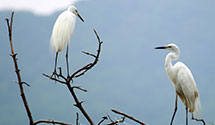
The entire body is gray and the legs are long. The back is gray while the abdomen and head are white with a strip of black from the eye to the back of the head like a ribbon. The beak and leg appears yellow or pink depending on the season. It is commonly seen during the summer in Korea and it is a sedentary bird so some fly to the south central region for winter. The primary feed is fish but it eats various animals such as frogs, field mice, small birds, insects, etc. It is dispersed around Korea, China, Japan, Mongolia, etc.
- Cheongpung and Geumseong area stream and around farmland
Cuckoo

It is a summer bird often seen in Korea. The eclipse plumage of the male is gray blue and the lower breast and abdomen have a white base with dark brown strips. The summer plumage and eclipse plumage of the female are similar to that of the male but the abdomen has a gray base with brown stripes. They feed on mainly larva, imago, and the eggs of butterflies, beetles, grasshoppers, cicadas, bees, flies, etc.
- Geumsusan Mountain, Jakeundongsan area – Easily observable in the summer
Wild Animals Observable in Cheongpung
Boar
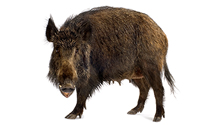
The body length is 1~1.8m, the height of the shoulder is 0.45~1m, and the weight is 100~300Kg. The head is big in the form of a corn shape and it is not easily distinguished from the body. The four legs are slim and short, and the body color is variable from dark brown to light brown. The canine in the lower chin grows for a life time to become a large fang which is like a blade essential in attack or defense when meeting with enemies. The nose bone is long and slim suitable to dig out food from the earth and it has a bad sight but good hearing and olfactory sense. The pregnancy period is about four months and it gives birth to 3~8 pups. The male does not take care of the pups. Omnivorous.
Raccoon

The body length is 50~80cm and the tail length is 13~20cm. The size of the body is smaller than the fox with a chubby and short leg and the end of mouth is sharp. The color of the body is usually black while the strip in the middle of the back, dot underneath the eye, and the strip in the front leg are darker. It is a nocturnal animal living inside a wooden hole or rock. The pregnancy period is 63 days and bears 4~5 young in May~June. The pair lives together as the male helps the female to raise the pups. The fur is used as a warmer and the hair is widely used for brushing. Omnivorous.
Weasel
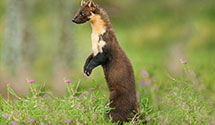
It has a violent temper and the ferret is kept as a pet. The body length of a male is 30~37cm and the female is 20~22cm with the tail length of 12~16cm and 7.5~9cm respectively. The color of the fur is usually glossy yellow red brown while the back is brown, the lip and chin is white, and the end of the snout is black brown. The body is slender and long whereas the legs are short. The ears are round and flat. The pregnancy period is 30~35 days and it brings forth 2~10 youngs at once. The lifespan is about 7 years and the feed is mainly rats, birds, snakes, frogs, insects, etc., and sometimes they harm breeding chickens. The fur is used as a muffler or in place of mink.
Eurasian Red Squirrel

The winter coat is about twice as long as the summer coat and has more hair. It has a lot of long hair in the tail area and there is long hair in the ear which changes into reddish brown or black. The abdomen is white. It climbs up slippery stems with sharp toe nails and the structure of the body is appropriate to live on trees. It keeps balance on a thin twig. It eats tree fruits, insects, buds, bird eggs, etc. and brings 3~6 young at once in April ~ October, living on a tree.
Squirrel

The body is about 12~17cm, the tail is 8~11.5cm, and the weight is 0.5~1.2kg. The body is brown with black and cream color strips on the back and the abdomen is white. The tail is relatively flat and there is a big pocket in the mouth, enabling it to store and move feed. It is good at climbing trees but mostly on the ground. It is diurnal and goes into hibernation during the winter. The pregnancy period is 30 days and bring 3~7 young at once. It is getting harder to see squirrels as people gather acorns in the mountain and as the number of wild cats increase.
Korean Hare
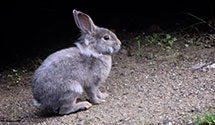
The color of the hair is generally dark brown and others are light brown, gray, and white sometimes with strips. Some types go through molting from white in winter to brown in summer. The color of the hair during the summer and winter remains the same but the fur in winter is usually long, soft, and dense while the summer hair is tough and short. The length from the elbow to the wrist is ¾ of the length from the knee to the heel, leaning forward. It resides in various types of environment like wild mountains, plains, farmland, or mountains. It breed cubs 2~3 times a year and bears 1~4 young at once. Herbivorous.
Badger

The body length is 56~90cm, the tail length is 11~20cm, and the weight is 10~16kg. The large toenail is suitable to dig an underground tunnel. The body is gray or brown while the abdomen is red brown and the face has distinctive black and white strips. It secretes yellow stinky liquid from the scent gland above the asshole. It applies this liquid on the rocks or bottom of trees to make the paths and when enemies attack, it usually makes a hole to escape but when it is not possible, it pretends to be dead or turns into a vicious fighter. The pregnancy period is 6 weeks and brings 3~5 young at once. Omnivores.
Wild Edible Plant Growing in the Geumsusan Mountain
Gondeure
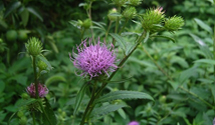
It’s a wild vegetable that grows in the high ground around Taebaeksan Mountain. With a unique scent, it was consumed as an emergency food for a long time, gathered every May. It is good for preventing adult disease as it is full of carbohydrate, calcium, vitamin A, etc. And the extract of the leaves has a cleaning effect and the root is good for neuralgia if dried and boiled. It is used to arrest the bleeding of a diuretic effect, alleviate fever as well as to treat woman’s disease in the oriental medicine practice.
Chwinamul
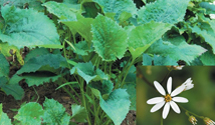
Belonging to the chrysanthemum family, there are about 100 types, There are about 60 types in Korea and 24 among them are edible. Those are Scaber, Tataricus, Pulchella, goldenrod, and Ligularia, and the scaber is most widely collected usually from nature. It is an alkaline plant containing protein, calcium, phosphorus, iron, vitamin B1 and B2, niacin, etc. with an excellent taste and smell. It works for a headache and cold, and is used as an ingredient for oriental medicine.
Dureup
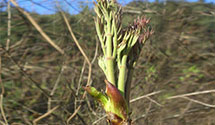
Called Mongmalchae or Moduchae, it is a wild edible green with a unique scent. The two kinds are Ddang Dureup and Namu Dureup. Ddang Dureup are shoots cut in April~May dug out of the ground and Namu Dureup are buds grown from trees. It is good for diabetes and stomach problems as it lowers blood sugar and blood lipid by containing protein, fat, sugar, fiber, phosphorus, calcium, iron, vitamin, saponin, etc.
Wonchuri

Like a sweet potato, it has a yellow tuber at the end of the stem. The yellow flowers of 6~8 blossom in July at the end of a flower stalk which wither after a day. The baby shoots are gathered in spring and the dried tuberous roots collected in spring and autumn is called Hwoncho which is used in oriental medicine to treat jaundice and diuretic. And a handful of this and the juice of a raw liver are used to treat constipation.
Naengi

Naengi is also called Nasaengi or Nasungge, and is grown in the field. The baby shoots and leaves are greens representing spring along with the roots. Naengi soup is boiled with the root to have a genuine taste. And the brewed Naengi is minced to cook rice porridge. It is full of vitamin B1 and C. The remedial effects are the strengthening of the spleen, and are good for diuretic, hemostasis and detoxification. It is prescribed for weak stomach, diabetes, blood spitting, nose bleeding, profuse menstruation, etc.
Songi Mushroom
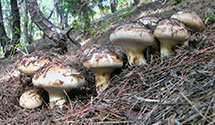
It comes out of the ground like a ball shape and becomes a dumpling shape as it grows. Later it becomes flat and the center slightly protrudes. The flesh is full and white, and the wrinkles are also white and dense. It is 10cm long and 2cm thick. The upper area is whiter while the lower area is brown with skin. Generally it grow from a 20~60 years old pine tree forest and the Songi bacteria is symbiosis bacteria forming Mycorrhizal attached to the fine roots of pine trees.
Neungi Mushroom
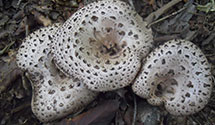
It grows in stocks in a broad-leaved forest. The height is 10~20m in the shape of a funnel like a morning glory. It is rose pink, turns into red brown as it grows and becomes black brown in the end. There are needles that are about 1cm. The scent gets stronger when it is dry and though it is edible, it is poisonous if eaten raw. It is dispersed in Korea and Japan.
Ssari Mushroom
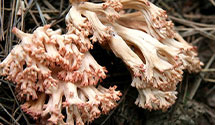
It grows in a broad-leaved forest during the summer and autumn. The end of the stalk is light red or light purple, and the rest of the stalk is white which turns into yellow after a while. It is about 3~5cm thick and resembles a white piece of wood. The flesh is white and full. It is edible. It is dispersed in Korea and the northern sphere of North Korea.
NorugungdengiMushroom
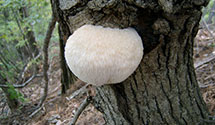
It is called ‘Hudugo’ in China as it resembles the head of a monkey. From summer to winter, it grows one stalk out of each broadleaf tree such as a queritron, an oak tree, etc. The circumference of the mushroom is about 5~20cm and mostly it is of a ball shape with hair on top and needles on the side. The needle is about 1~5cm long and the thickness is about 1mm with a sharp end. It is edible and is artificially grown using sawdust. It is dispersed around Korea, Japan, and China.

